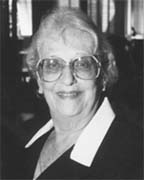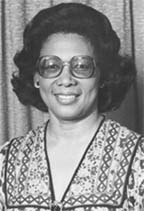Introduction
It was thirty years ago (in the month of February to be exact) that the party then in power, the People’s National Congress (PNC) introduced a new constitution called the People’s Constitution. The government claimed that the 1966 In-dependence constitution was inadequate especially in light of its socialist orientation. This new ideological path had begun ten years previously when the country achieved republican status under “Cooperative Socialism”. The new constitution would allow the government to enshrine several of its socialist goals. Of particular interest to women was Article 29(1) which stated that women and men have equal rights and the same legal status in all spheres of political, economic and social life and that all forms of discrimination against women on the basis of their sex was illegal. The first election under the new constitution was held in December 1980, ten months after its promulgation. The focus of this article will be to examine the participation of women during the two parliamentary periods following the introduction of the 1980 constitution.

Women in the 1980 General Elections and the National Assembly of the Fourth Parliament
Under the new constitutional arrangements the members of the National Assembly were increased from 53 to 65.The 53 members would be directly elected as in the past, 2 members would come from the National Congress of Local Democratic Organs (NCLDO), and 10 from the Regional Democratic Councils (RDC), one from each of the 10 regions into which the country was now divided. There was also to be a Supreme Congress of the People which was to consist of the NCLDO and members of the National Assembly.
Three political parties contested the general elections- the incumbent PNC, the PPP and the UF. The newly formed WPA did not. They described their boycott as “the first major act of a process of non-violent non-cooperation with the misrulers of Guyana…” The list of candidates of the parties included 182 names. Of this number, 64 were from the ruling PNC and 16 (25%) were women. There were 53 from the PPP, 6 (11.3%) were women and of the 65 from the UF 8 (12.3%) were women. Hence 30 (16.4%) of the list of candidates were women. As a result of the elections the incumbent PNC won 53 seats equal to 77% of the votes cast, the PPP 10 seats equal to 19% of the votes cast and the UF 2 seats equal to 4% of the votes cast.
In the National Assembly of the Fourth Parliament, despite the intentions of article 29, the numbers of women parliamentarians did not increase significantly vis-a-vis the number of men. In addition to the Prime Minister, there were four Vice Presidents none of whom were women. None of the 10 senior Ministers were women. Three (23%) of the 13 Ministers were women. They were Ms. Urmia Johnson, Minister of Cooperatives, Ms. Jean Maitland Singh, Minister of Consumer Protection in the Ministry of Trade and Consumer Protection and Ms.Yvonne Harewood Benn, Minister of Public Service. None of the Ministers of State was a woman but all three (100%) of the Parliamentary Secretaries were women – Ms. Agnes Bend-Kirton, Women’s Affairs and Housing, Philomena Rayman and Edith Myrtle Bynoe, Office of the Prime Minister. Of the other 23 PNC parliamentarians, 6 (26%) were women. Of the 10 PPP parliamentarians, only one (10%) Mrs. Janet Jagan (as in the previous Parliament) was a woman. Neither of the United Force parliamentarians was a woman. In the regional elections women fared little better, only three parliamentarians from the RDCS were women.

Women Parliamentarians in the 1985 General Elections and the National Assembly of the Fifth Parliament
In the 1985 general elections which were contested on December 9, 1985 just four months after the death of PNC Founder-Leader, Forbes Burnham, there were 312 names on the five participating parties’ lists. These included the three which contested the 1980 elections in addition to the Working People’s Alliance (WPA) and the National Democratic Front (NDF). Only the latter fielded 52 candidates. The other four all had 65. 22 (33.8%), 6 (9.23%), 8 (15.3%) , 13 (20%) and 11 (16.9%) respectively of the PNC, PPP, NDF, UF and WPA were women. Therefore, 60 (19.2%) of the lists were women. This was double the number of women on the 1980 lists which was then 30 (16.4%) of the 182 names. As a result of the elections, the incumbent PNC retained its two thirds majority with 54 (85.4%) of the seats, the PPP 8 (12.8%), the UF 2 (3%) and the WPA 1 (1.5%) of the seats.
The National Assembly of the Fifth Parliament was made up of 73 members. The members of the PNC government were vulgarly bloated to 61. In addition to the Prime Minister, one First Deputy Prime Minister and Vice President, there was four other Deputy Prime Ministers two of whom were also Vice presidents. Of the four Vice Presidents only one (25%) was a woman and she was Viola Burnham, wife of the late president. Only one (14%) of the seven senior Ministers was a woman, Ms. Yvonne Harewood Benn, Minister of Information and Public Service. One (25%) of the four Ministers was a woman, Ms. Urmia Johnson, Minister within the Ministry of National Mobilisation. There was one woman among the four Ministers of State, Dr. Faith Harding, Minister of State within the Ministry of Planning and Development. Two (66%) of the three Parliamentary Secretaries were women – Ms. Stella Odie-Ali, Home Affairs, Jean Persico, Education and Jennifer Perreira, government Chief Whip. Of the 24 other government MPS, 11 (45%) were women. Hence 18 (29%) of the 61 PNC parliamentarians were women. Additionally, 5 (41.7%) of the 12 parliamentarians from the NCLDO and RDC all from the government benches were women. Mrs. Janet Jagan was the only woman among the 11 minority parliamentarians.
Assessment of the decade
The figures quoted in the sections above indicate that there was an increase in the numbers of women in parliament as a whole. In fact the numbers of women in parliament after the 1985 elections was the highest since women first became MPS. However, this number continued to be far less than male MPS despite the intentions of Article 29 of the 1980 constitution. For women to become Parliamentarians, their names first had to be placed on the party’s list of candidates. During the two elections discussed the numbers of women on the lists remained relatively small even though electors were voting not for individuals but for a slate of candidates put forward by the political party and this eliminated the possibility of individual candidates losing.
One of the main reasons for so few women being placed on the lists was undoubtedly linked to the lingering notions of patriarchy and the dichotomy posed by the continued acceptance of the notion of the public and private worlds of men and women which were separate, distinct and even antagonistic arenas of human life. The public domain which included participation in political activity was a man’s world of competition and aggression while the woman’s world was the private domain of the family. This is exacerbated by many of our women’s lack of access to education, financial resources, some accepted cultural practices and lack of support from other women. Furthermore, it took a decade before Article 29 was made enforceable by the passing of the Equal Rights Act of 1990 and the amendments to several laws after the PPP took office in 1992.
It would also be true to say that the increase in the numbers of women parliamentarians was influenced by the stimuli of the UN Decade For Women which began in 1976.The 1980 elections coincided with the promulgation of the Mid Decade Plan of Action while the 1985 elections coincided with the declaration of the end of decade Nairobi Forward Looking Strategies. The ruling party sent strong delegations to both conferences in the person of Mrs. Viola Burnham, head of the WRSM. Perhaps it was not without significance that the Women’s Affairs Bureau was established in 1981 with responsibility for coordinating, monitoring and implementing medium and long term gender equity programmes at the national and regional levels However, in its initial stages the bureau faced significant hurdles in its attempt to fulfill its mandate.
Those few women who actually became parliamentarians and especially members of Cabinet were confined to those areas of activity associated with women’s roles as nurturers – education, culture, social development or to other relatively unimportant ministerial positions especially being named Minister within a Ministry. These positions made it impossible to wield any real power. Overall, during the decade under discussion, our women parliamentarians did not (and still do not ) have the ‘critical mass’ to force issues of importance to women on parliament’s political agenda. That trend continues.









